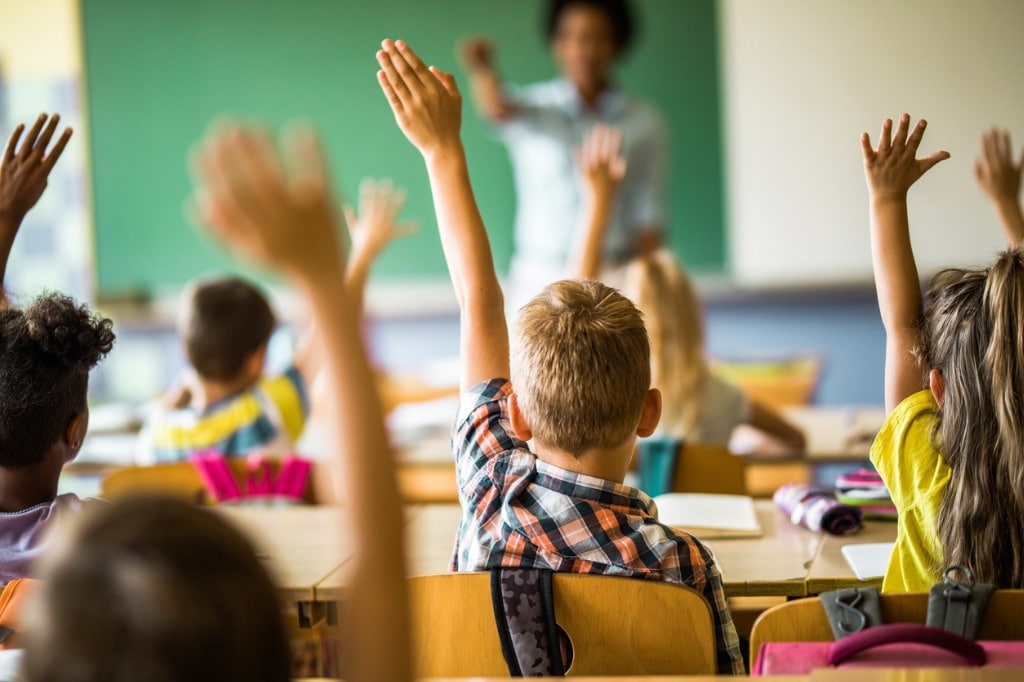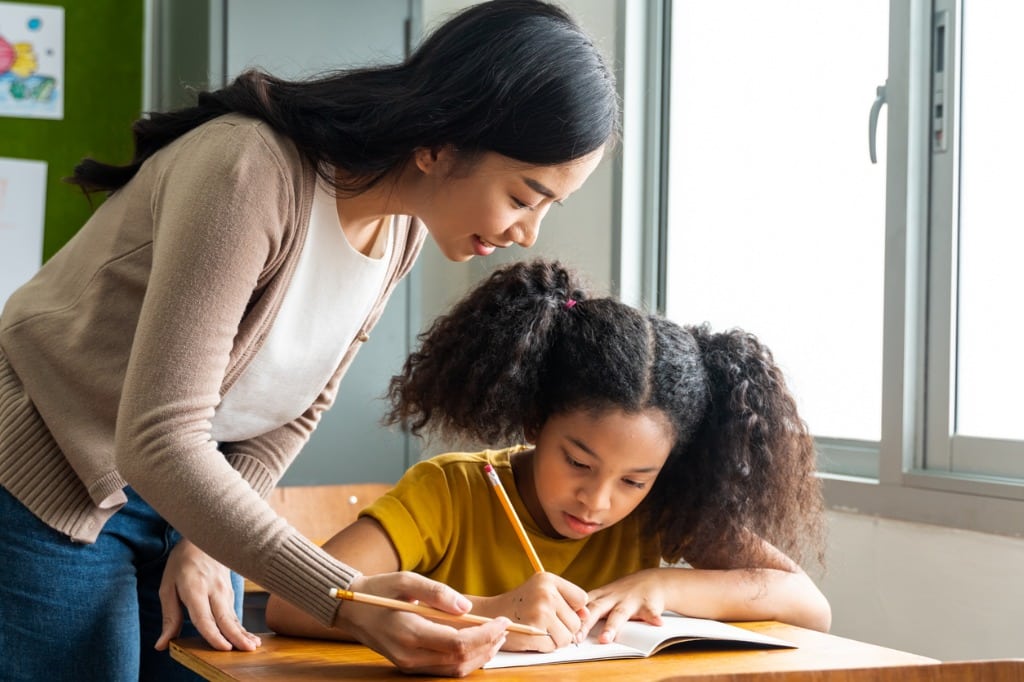How To Create A Positive Learning Environment For Adults

As you are heading back to school this year, whether it's in-person, online or otherwise, it's important to create a positive learning environment for your students and an environment that is conducive to your well-being too!
Table of Contents:
- Build Positive Relationships Through Communication
- Promote Class Discussion and Peer Interaction
- Staying Connected with Students
- Come Up with Projects Students Can Get Excited About
- Create a Sense of Order and Routine
- Positively Reinforce Good Behavior
- Take Care of Yourself and Maintain a Positive Mindset
Teachers have always known that creating a positive environment is necessary to help students learn and grow. From planning fun activities and writing prompts that promote positivity to teaching students to use positive words when speaking to others, positivity has become an integral part of the classroom fabric.
We made it through the last school year (and everyone deserves a round of applause for that alone!), but this year is sure to bring new challenges too. As teachers, we need to make sure that we are prepared for anything.
1. Build Positive Relationships Through Communication
As you know, building positive relationships with your students, as well as with their parents, is integral to creating a productive environment for learning and personal growth.
Communicate with Both Students and Parents
You'll want to regularly provide updates and information about what is expected of students and parents. Things can change in an instant and you may have to adjust lesson plans or your students' work quickly. To make sure everyone is on the same page, ensure that you send information on changes to the appropriate parties in a timely manner.
Make important information as accessible as possible. Post announcements in the classroom, and consider using multiple formats to communicate with students and parents so that vital information isn't missed. Post the same information to online platforms, as applicable, and ensure your accessibility by providing your email and phone number with each communication.
Interact with Your Students on a Personal Level
While you'll want to establish routines and implement classroom management techniques early on, you don't need to rush into the content of your curriculum right away. Take the time to get to know your students as individuals first. The better you understand their interests, strengths, weaknesses and personal challenges, the more effective you'll be at developing a positive relationship with them that will last the whole year.
 Figure out the best way to interact with each student individually, utilizing humor, technology or other creative strategies to present information that might otherwise not hold their attention. Have fun with it, and help students get to know each other by using icebreakers or having them exchange letters.
Figure out the best way to interact with each student individually, utilizing humor, technology or other creative strategies to present information that might otherwise not hold their attention. Have fun with it, and help students get to know each other by using icebreakers or having them exchange letters.
One-on-one meetings will help you to show students that you care about them and will build the trust and understanding you'll need to help guide them on their educational journey. These meetings will help to keep students engaged and reinforce your teacher-student bond.
2. Promote Class Discussion and Peer Interaction
Hold regular class meetings to check in with all of your students and encourage them to express themselves constructively. Promote positive interaction amongst your students. Allow them to share their feelings, and encourage them to listen to each other, give compliments, express gratitude and practice problem solving together.
As teachers, we can present topics and help initiate discussions, but then let students guide the conversation. You'll learn a lot about them just by listening! You'll also want to establish groups to help students learn to collaborate and hold regular group meetings. You may find that some students are more attentive in these smaller groups, and you'll be able to provide extra help and attention for those who need it.
3. Staying Connected With Students
Making sure that students can connect with you and each other in whatever way works best is of utmost importance. You'll want to keep yourself approachable for questions, whether that is during the school day or if your students need to email you to ask a question during the evening.
Your students and their parents shouldn't feel intimidated when asking you questions, as you'll have established a helpful environment where no child is left behind beforehand.
4. Come Up with Projects Your Students Can Be Excited About
An easy way to keep your students engaged and excited about learning is to come up with projects that are both fun and meaningful, such as creating a classbook. If you want to engage students and get them excited about writing, then let them see their work and their names in print in a collaboratively-created classbook.
This project serves to introduce young writers to the writing process and build confidence in their skills. It also promotes teamwork, encourages creativity and creates a keepsake for your class.

5. Create a Sense of Order and Routine
A great way to establish a healthy sense of order and routine is to greet your students in the same way every day. You can greet your students at the door of your classroom each day at a safe distance and pass out "air high fives" with enthusiasm. Let them know that each and every one of them matters to you and show that you care by making individual connections.
 Explain to them that no matter what has happened before, you'll be there at the beginning of every day of school to look them in the eye and wish them a good morning. Tell them that you expect the same in return.
Explain to them that no matter what has happened before, you'll be there at the beginning of every day of school to look them in the eye and wish them a good morning. Tell them that you expect the same in return.
Creating routines helps to maintain a sense of order in the classroom. Routines provide students with a solid foundation from which to start from and a structure to help them move through their day. You can create routines for activities throughout the school day and even for the transitional times in between.
To create routines that your students can stick to, start by explaining each routine and why it's important. Let your students know exactly what to expect, as well as what you will expect from them. Then, let your students practice the routine using modeling and demonstrations.
Once your class has an understanding of a new routine, make it a part of your daily schedule. If you find that your students have a difficult time remembering a routine once they return from a break, be flexible in reviewing that routine and consider making changes to help set your students up for success.
6. Positively Reinforce Good Behavior
All teachers understand the ongoing challenge of managing behavior and keeping students on task in class. There was once a time when doling out harsh punishments for misbehavior was common practice. But we have since learned that positive reinforcement of good behavior is a much more effective method of changing student behavior for the better.
Rather than focusing on what your students are doing wrong and reprimanding them—a form of negative reinforcement that can inadvertently promote acting out—praise your students for what they are doing right.
If you see students misbehaving or otherwise taking incorrect action, make a point to thank the students you see taking the correct action. Saying thank you for listening, thank you for following my instructions and thank you for participating will positively reinforce those behaviors.
7. Take Care of Yourself and Maintain a Positive Mindset
Do what you can to take care of yourself, both mentally and physically, and practice thinking positively; your state of mind will most certainly have an effect on the kind of learning environment you are trying to create for your students. If you don't properly take care of yourself, you won't be able to help your students as effectively either.
Practicing additional self-care on your off-time will also be of great benefit to both you and your students. Seek out strategies that will help you destress and unwind, such as practicing deep breathing, meditation, body scans, muscle relaxation and stretching.
Studentreasures provides free classbook publishing kits. Creating a classbook is not only a fun activity that teaches students about the writing process, it can also help build their confidence as young writers.
Visit our website to learn more about how the process works and see how your students can become published authors!

How To Create A Positive Learning Environment For Adults
Source: https://studentreasures.com/blog/teaching-strategies/how-to-create-a-positive-learning-environment-in-person-and-online-this-school-year/
Posted by: bigelowcrongety.blogspot.com

0 Response to "How To Create A Positive Learning Environment For Adults"
Post a Comment